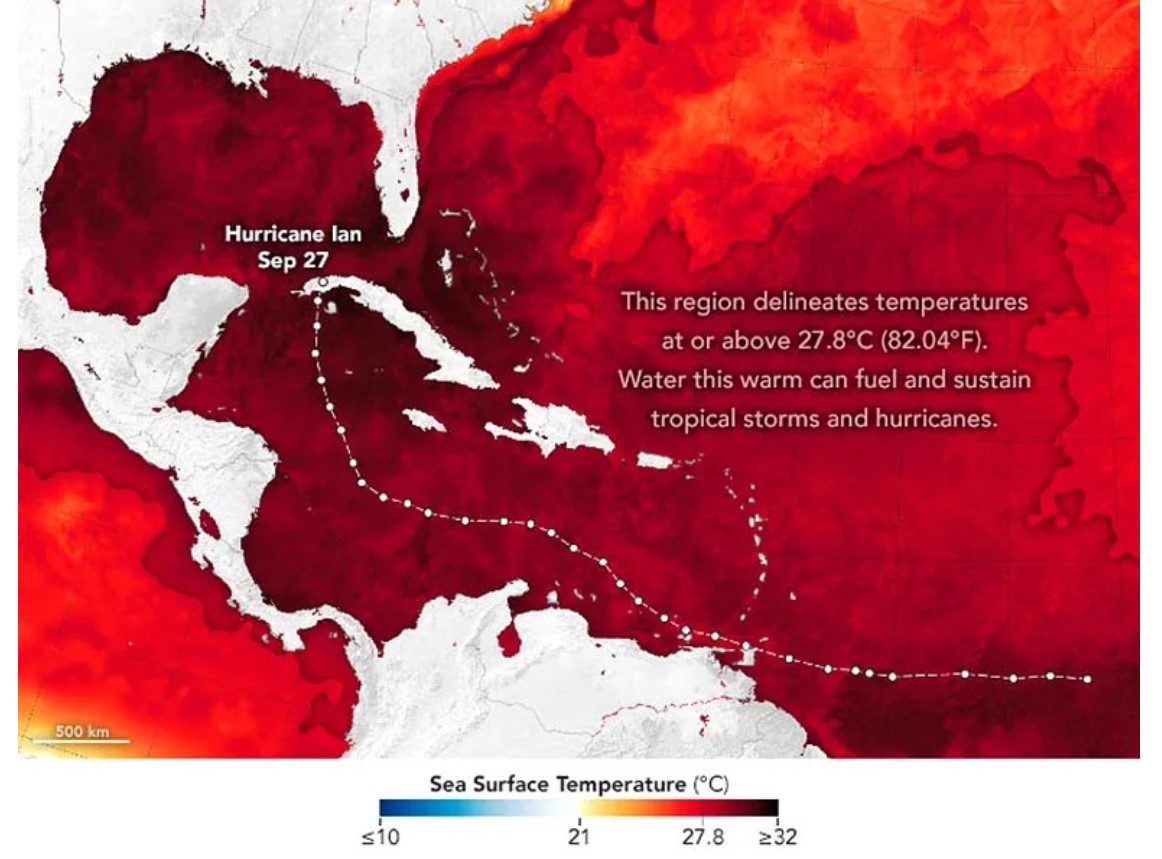
Fuel for Hurricane Ian: Fearsome Power Comes From the Ocean
- Climate ChangeInternational News
- No Comment
- 270
Warm seas provide fuel for extreme storms, and can then be cooled by them.
Even though tropical cyclones are atmospheric phenomena, much of their fearsome power actually comes from the ocean. The seas are plentiful sources of moisture to feed growing storm clouds. Just as critically, they are also massive repositories of thermal energy that can move from the sea to the sky.
On September 27, 2022, as Hurricane Ian lashed western Cuba and headed for the west coast of Florida it moved over a vast fuel source in the Gulf of Mexico. While sea surface temperatures are just one of the significant factors influencing hurricanes, they are a fair predictor of the readiness of the ocean to sustain them.
The map above shows sea surface temperatures (SSTs) as measured on September 26 by a combination of satellite and ocean instruments and processed by
Sea Surface Temperature Anomaly, September 15 – 26, 2022.
The maps above depict sea surface temperature anomalies on September 15 (left) and September 26 (right). They show how much the surface layer was above or below the long-term average temperature for this time of year. Between September 3 and 10, the storm that developed into Hurricane Earl traveled through the northwest Atlantic, leaving a trail of cooler water in its wake. Next, Hurricane Fiona—which traced a path of destruction across Puerto Rico, the Dominican Republic, Bermuda, and Newfoundland—also left a cool patch in its wake as it moved north between September 15-26.
Water vapor naturally cools as it rises through the atmosphere and then falls back onto the sea as rainwater. Having given up much of its heat to the atmosphere, the rain cools the sea surface a bit. Simultaneously, the winds and waves of a hurricane disperse warm surface water and bring up cooler water from the ocean depths.
In theory, the cooler water rising to the surface should make it less likely for a new storm to develop or intensify in the same area in the following days. However, the waters of the North Atlantic were not necessarily cool after Earl and Fiona, just at a lower temperature compared to before.
By
https://scitechdaily.com/fuel-for-hurricane-ian-fearsome-power-comes-from-the-ocean/



